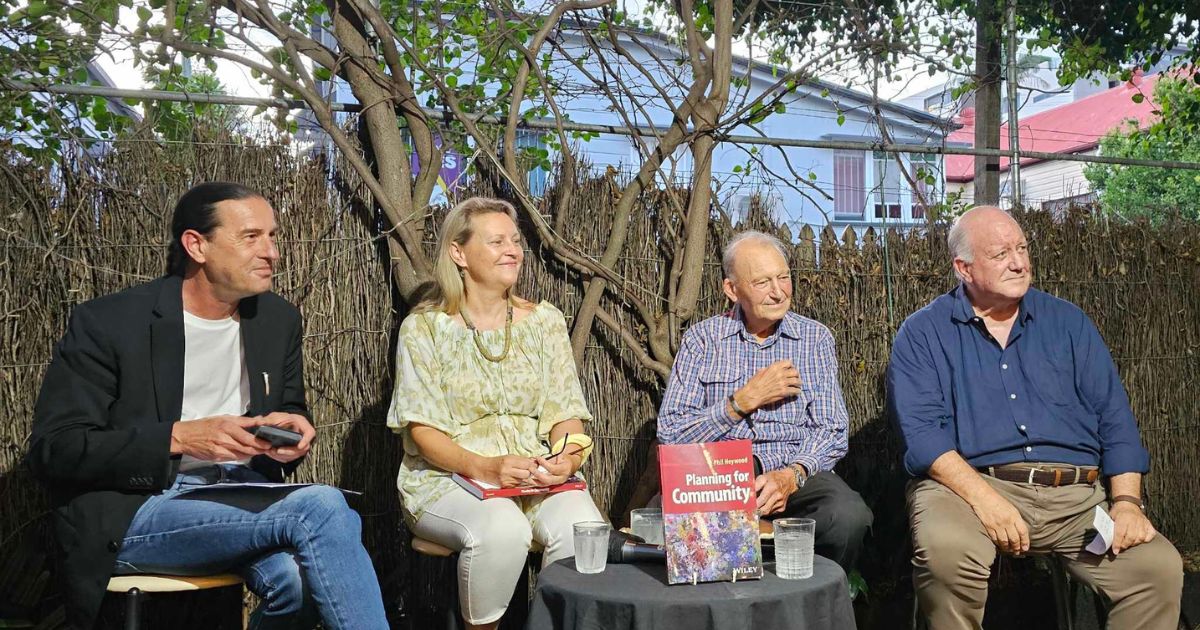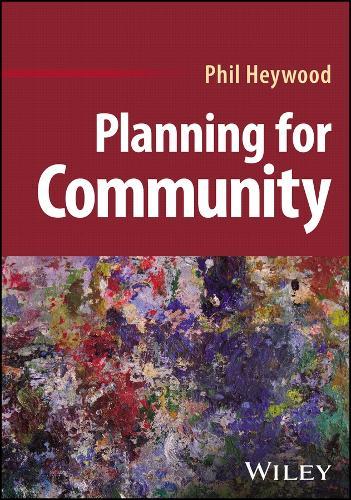Local legend Joe Hurley had the great pleasure of introducing another local legend in Phil Heywood at the launch of Phil’s updated book on community planning at Avid Reader recently.
Joe has kindly given us permission to reprint his words.
I was overwhelmed by the invitation to speak on behalf of someone for whom I have so much admiration and respect, and someone who I know has influenced so many in our community and far far beyond, and no doubt will continue to do so for many years to come.
And someone who I see as such an important contributor in so many ways to our village, our city and more broadly to progressive thinking about the ways communities can work together to address the issues that they confront as they develop and grow.
I have been fortunate to know Phil for more than thirty years – during that time I have enjoyed a consistent collaboration with Phil professionally, and like anyone who has spent time with Phil, I have also come to appreciate him as a friend and as a beautiful human being.
I know that through this edition of Planning for Community, Phil talks to us of not just the nature of problems that communities face but suggests to us pathways that citizens and communities can take to work productively with these. And that pragmatism and the values that this journal encapsulates reflects our collaborative relationship over many years.
In my former role as Coordinator of CommunityPlus, and particularly as Manager of West End Community House, I found a friend, a compatriot, a collaborator, an advocate, and a fellow villager who worked with me shoulder to shoulder for two decades to understand, highlight, and seek solutions to the issues facing this community, our village.
When our community began facing the pressures of gentrification and was urgently seeking solutions to ensure we could maintain some level of social cohesion and equity, Phil mobilized. Suddenly teams of students began to research and document the changes that were occurring, engage with residents about the impacts they were experiencing and consider real world responses to these. But these weren’t solely academically grounded approaches, they were thoughts and actions grounded in the values of social justice, which I know are at the centre of Phils practice and being.
Phil would regularly send teams of students (often accompanied by himself) to West End Community House’s weekly community breakfast for homeless and marginalized community members. These students were being offered the opportunity to gain insight into the needs and issues of persons who were often voiceless in the broader community, to enlighten their professional practice by understanding better the people who could most benefit from their professional skills and influence. It was a very different type of learning approach for urban and regional planners, and one that I know was intended to ground them firmly in the human condition. And an approach that very clearly reflects Phils own values.
Through his Community Practice Unit at QUT, Phil offered this type of support to communities across Brisbane. Whether addressing inter-generational poverty in public housing estates, working to preserve remnant bush corridors, or considering better responses to rough sleeping and homelessness in the CBD, Phil leading his student teams would gravitate to the centre of these issues, probing, considering, understanding and offering solutions for communities to pursue. The contributions that Phil has supported through this type of work are innumerable and have been absolutely invaluable to our City, and undoubtedly continue their resonance to this day.
In our fast-paced world, where development often outpaces thoughtful consideration, the significance of community planning cannot be overstated. It’s about more than just laying down roads and erecting buildings; it’s about cultivating spaces where people can thrive, where values are upheld, and where the very soul of a community finds its voice.
I recently learned of Phil’s earliest years in London, where he recalls as a very young boy the daily activity of waking to look for the homes that had been destroyed in the nightly bombing blitz. Rather than recalling this as a sombre or difficult moment, Phil recalls this as an important and somewhat perversely joyous time, where community members would come together to support each other, celebrate their survival, and that of their villages.
So, with this background, it is no surprise that Phil and I have shared a passion for housing issues throughout our relationship. This passion for housing is reflected in his book, where amongst other initiatives he highlights the work of Brisbane Housing Company (BHC) where I am now employed. As ever and consistent with his approach, in BHC Phil has seen a pragmatic solution that arose from ours and neighboring villages, as an opportunity for community members to work together to address a very real human issue, and offer a values-based response to the needs of vulnerable community members. To do better at bringing all community members along, championing their participation, access, equity and the rights of all. Helping our community to consider and then plan a better path for the future.
Phils values and pragmatism are probably best illustrated to me through West End Community House’s Community Breakfast program that I spoke of earlier. A decade ago, and in the face of devastating funding cuts and changing personnel, this long established and valued service was at risk of ceasing. Understanding its importance to those who needed it, Phil committed himself to ensuring the programs survival (as he has committed himself to so many issues in the past). So as I left Community House to start work at BHC, Phil formalized his role as central to the continuity of the Breakfast program, rallying support, engendering energy and participation, and immersing himself in the needs of our most vulnerable community members. For me, this was a hugely inspiring and heartwarming action, and it is a role that he continues to this day, giving of himself freely for the enrichment of our village. I witness how embedded he is in our community, and central to its health and life. It is just one of the many things that I am grateful to Phil for.
It is also important for me to acknowledge that throughout my career, I have met countless individuals who have been influenced by Phil. The mere mention of his name brings smiles to faces, and stories of his teaching, his enthusiasm for knowledge, learning and life. It is hard for me to think of someone else that I have met who has had such a profound impact on so many people, and helped to shape their thinking, their practice and their values through his work.
I am grateful that this book encapsulates all of these qualities. That it will serve to educate, provoke and inform readers and become an important tool for them to consider how best to work with community in their professional practice. That it will be an instrument that will be applied in our village, and no doubt in so many other villages across the world. It is just another of Phil’s many and significant contributions to our community life.
So tonight I am delighted that we have the opportunity to celebrate our fellow villager together, to celebrate his most recent contribution to our community, and to take this further opportunity to engage with Phil’s thinking, values and action.
On behalf of all present I am sure, I offer our congratulations to Phil for this achievement, and our thanks for what he has bought to our lives, and community life here in West End and beyond.
Thank you Phil
Main Picture by Jan Bowman: Joe Hurley, Vanessa Bennett, Phil Heywood and Chris Buckley at Avid Reader.
You can purchase a copy of Planning for Community at Avid Reader Bookshop, or, as Phil also suggests, borrow a copy from your local library.



